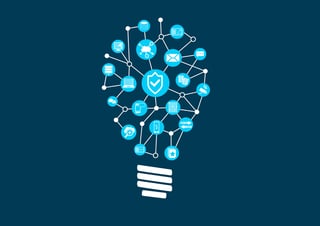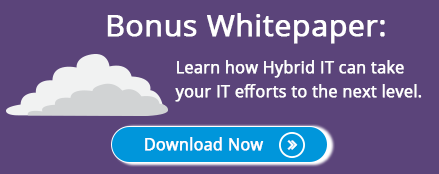 According to the findings of a recent study, it is estimated that 90 percent of companies will eventually move to a Hybrid IT model. This is no surprise considering the many advantages such as agility, scalability, resiliency, automation, simplicity, and reduced costs that only hybrid IT can offer. The quickening migration to hybrid IT is evident in an IDG study published in Forbes, which estimates that a typical IT department has only 40% of its apps and platforms residing in on premise solutions. How exactly does hybrid IT transform the role of the traditional IT team? Read on to find out.
According to the findings of a recent study, it is estimated that 90 percent of companies will eventually move to a Hybrid IT model. This is no surprise considering the many advantages such as agility, scalability, resiliency, automation, simplicity, and reduced costs that only hybrid IT can offer. The quickening migration to hybrid IT is evident in an IDG study published in Forbes, which estimates that a typical IT department has only 40% of its apps and platforms residing in on premise solutions. How exactly does hybrid IT transform the role of the traditional IT team? Read on to find out.
Adjusting to the Changing Role of IT
The traditional approach to IT is straightforward. Safeguarding the data center, ensuring the stability of the network infrastructure, and offering a predictable experience for users are the staples of traditional enterprise management. The on premise enterprise is based upon large CAPEX, so longevity is essential in order to substantiate large investments. When other business units within the company require a new application be deployed, internal IT either purchases a new server or spins up a new VM. New projects and implementations require weeks and months of planning. Innovation ensues sequentially and takes place over time.
IT now has a new role: it is no longer the guardian of the data center; it is the IT broker of the enterprise. This new role is somewhat similar to that of a real estate broker. Homebuyers can choose to purchase a house on their own, risking their capital should they not fully understand current market conditions, disclosures or contract law. Utilizing a real estate broker lessens their risk exposure and protects their interests. Similarly, the role of IT is to guide business units to find the optimum infrastructure to house their workload and protect them before, during and after the deployment process.
IT as a Service (ITaaS)
Like the very cloud based applications that spawned the transition of this new role, IT must think of itself as a service. The focus of IT today is to find innovative solutions that solve business problems, pursue opportunities, and grow the business. Whether these solutions can be implemented within their direct control on premise or outsourced to a third party service provider is irrelevant. In order to do this, internal IT must put the needs of the business first before technology. It must regard the business units of the company as its customer base. Hybrid IT is both a technology archetype as well as a mindset. This strategy creates an agile, responsive platform for the enterprise to flourish in a global economy where disruptors can change the rules overnight and windows of opportunities are narrow and short lived.
Keeping Up with the Rapid Pace of Change and Innovation
Keeping up with IT innovation today can be a bit overwhelming. New types of cloud services, hybrid management systems, hosting platforms, security tools, and digital services are introduced constantly. This is much different from traditional IT that sought to maximize application longevity and stability. Internal IT was able to control the pace of change, as upgrades were manually induced processes.
Cloud-based applications will not have the lifespan of applications hosted within the legacy enterprise. Application cycles may in fact be as short as the windows of opportunity that they sometimes serve. IT must prepare itself and the organization for continual innovations and technology evolvement. In the future, it will not be technology itself that will provide longevity and stability to the organization, but the pursuit of innovation. For those in the IT field, lifelong learning will become an industry imperative.
If you’d like to learn more about the changing role of IT in the enterprise, or how to put hybrid IT to work at your company, read our full tech brief here and contact us with questions. Want to learn more? Check out our whitepaper, "An Introduction to the New IT Approach Called Hybrid IT."












